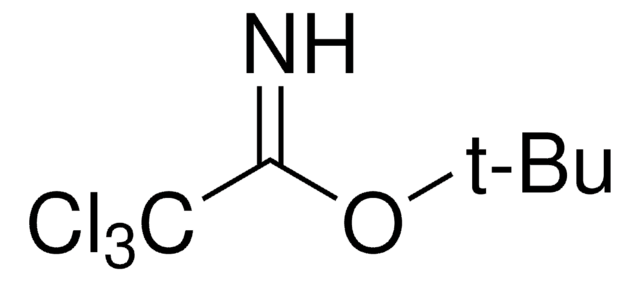678937
Tris[(1-benzyl-1H-1, 2, 3-triazol-4-yl)methyl]amine
97%
Sinónimos:
TBTA
About This Item
Productos recomendados
Nivel de calidad
Análisis
97%
formulario
solid
idoneidad de la reacción
reagent type: ligand
reaction type: click chemistry
mp
132-143 °C
temp. de almacenamiento
−20°C
cadena SMILES
C(N(Cc1cn(Cc2ccccc2)nn1)Cc3cn(Cc4ccccc4)nn3)c5cn(Cc6ccccc6)nn5
InChI
1S/C30H30N10/c1-4-10-25(11-5-1)16-38-22-28(31-34-38)19-37(20-29-23-39(35-32-29)17-26-12-6-2-7-13-26)21-30-24-40(36-33-30)18-27-14-8-3-9-15-27/h1-15,22-24H,16-21H2
Clave InChI
WKGZJBVXZWCZQC-UHFFFAOYSA-N
Categorías relacionadas
Aplicación
Producto relacionado
Frases de peligro
Clasificaciones de peligro
Aquatic Chronic 4
Código de clase de almacenamiento
11 - Combustible Solids
Clase de riesgo para el agua (WGK)
WGK 3
Punto de inflamabilidad (°F)
Not applicable
Punto de inflamabilidad (°C)
Not applicable
Equipo de protección personal
Eyeshields, Gloves, type N95 (US)
Elija entre una de las versiones más recientes:
¿Ya tiene este producto?
Encuentre la documentación para los productos que ha comprado recientemente en la Biblioteca de documentos.
Los clientes también vieron
Nuestro equipo de científicos tiene experiencia en todas las áreas de investigación: Ciencias de la vida, Ciencia de los materiales, Síntesis química, Cromatografía, Analítica y muchas otras.
Póngase en contacto con el Servicio técnico









